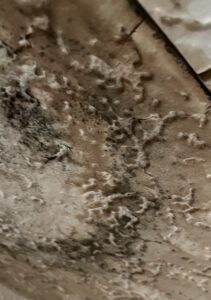Prevent Mold to Protect Your Home and Your Health
go.ncsu.edu/readext?786843
en Español / em Português
El inglés es el idioma de control de esta página. En la medida en que haya algún conflicto entre la traducción al inglés y la traducción, el inglés prevalece.
Al hacer clic en el enlace de traducción se activa un servicio de traducción gratuito para convertir la página al español. Al igual que con cualquier traducción por Internet, la conversión no es sensible al contexto y puede que no traduzca el texto en su significado original. NC State Extension no garantiza la exactitud del texto traducido. Por favor, tenga en cuenta que algunas aplicaciones y/o servicios pueden no funcionar como se espera cuando se traducen.
Português
Inglês é o idioma de controle desta página. Na medida que haja algum conflito entre o texto original em Inglês e a tradução, o Inglês prevalece.
Ao clicar no link de tradução, um serviço gratuito de tradução será ativado para converter a página para o Português. Como em qualquer tradução pela internet, a conversão não é sensivel ao contexto e pode não ocorrer a tradução para o significado orginal. O serviço de Extensão da Carolina do Norte (NC State Extension) não garante a exatidão do texto traduzido. Por favor, observe que algumas funções ou serviços podem não funcionar como esperado após a tradução.
English
English is the controlling language of this page. To the extent there is any conflict between the English text and the translation, English controls.
Clicking on the translation link activates a free translation service to convert the page to Spanish. As with any Internet translation, the conversion is not context-sensitive and may not translate the text to its original meaning. NC State Extension does not guarantee the accuracy of the translated text. Please note that some applications and/or services may not function as expected when translated.
Collapse ▲
Mold is not only unsightly, if left untreated, mold can threaten the structural integrity of your home and cause health problems. Mold is a natural part of the environment that cannot be eliminated, but mold spores can be prevented by controlling the conditions which allow them to grow. Mold requires a food source, moisture, appropriate temperature, and oxygen to develop.
Many of us are unaware that our homes are inviting mold. Many materials, including: wood; textiles; paper; leather; and surfaces covered with organic matter, provide food for mold. Moisture in your home can be generated from a leak, flood water, or high humidity. While you may not be able to control all of the food sources for mold, you can control moisture.
It is important to maintain a moisture balance inside your home. The EPA suggests keeping indoor relative humidity below 60 percent; ideally between 30 and 50 percent. You can measure the relative humidity by using an inexpensive moisture or humidity meter available where hardware is sold.
Locating and eliminating the causes of excess moisture are best ways to prevent mold growth. Some common sources of excess moisture include: leaky pipes and faucets; not using exhaust fans; poorly maintained or poorly sized air conditioning systems, clogged gutters, building leaks, and poor water drainage around the foundation of the home.
Temperature can also impact the amount of moisture in the air. Condensation is a common source of moisture. You can
reduce condensation by adding insulation to surfaces with cool temperatures and increasing the flow of heated air throughout your home.
Movement of moisture in and out of your house can contribute to increased moisture levels. Decrease this flow by sealing air leaks around windows, doors, air register grilles, plumbing fixtures, and electrical outlets. Sealing HVAC system air duct leaks and installing vapor barriers in the crawl space are also important preventative measures.
Air circulation and ventilation affect the amount of moisture in your home. You can increase circulation and improve ventilation by installing heating and cooling system vents and ceiling fans, using exhaust fans to remove excess moisture at the source, keeping interior doors open, leaving supply vents open and free from obstruction, and installing attic vents.
Bathing, cleaning, cooking, washing dishes, and doing laundry raise the humidity level in your home. Reduce indoor humidity by decreasing bathing water temperature to minimize steam and by turning on exhaust fans when bathing and while cooking. Venting appliances to the outdoors and using a dehumidifier also reduces indoor humidity levels.
Preventing mold is much easier and more cost efficient than removing it. By preventing moisture problems that can cause mold to grow, you are protecting the health of your family and the structural integrity of your home. Getting a home inspection to find and correct moisture problems is your best method of attack.
For more information about causes, prevention, and removal of mold in your home, contact Lisa Smith, at lfsmith5@ncsu.edu or 252-531-6198.




